Phil Marley
Sustained torrential rain, collapsing dams, a metre of water in the main street. Well, that was last year’s attempt at a weekend in Wedderburn. This year, things went rather better!!
Fri 17 Nov
We met mid-morning at Bells Swamp NCR on the Bridgewater-Maldon Rd. The sun was up, the sky clear and the breeze gentle. Recent sightings of elusive Painted Snipes had pulses racing. Expectations were high.
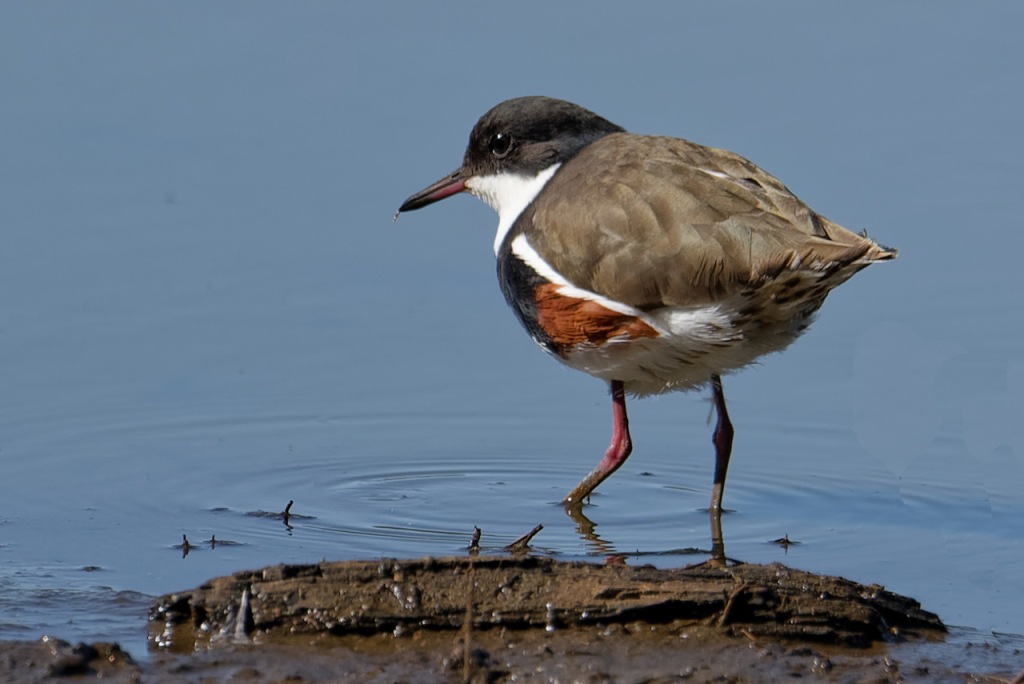
Our arrival was greeted by a couple of hundred Grey Teal standing motionless in the shallow waters and a couple of hundred Black Native-hens pecking away on the muddy flats. Black-fronted and Red-kneed Dotterels patrolled the water’s edge, along with Masked Lapwings, Yellow-billed Spoonbills, White-faced and White-necked Herons and a Great Egret.
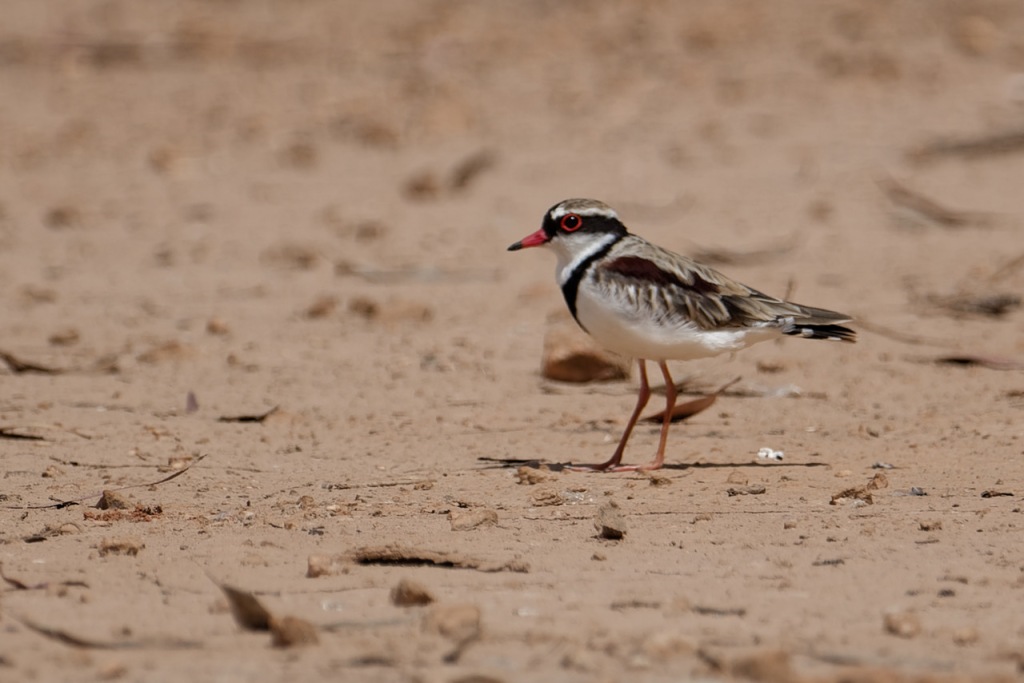
In the trees around the mudflats, Sacred Kingfishers, a Little Friarbird, Musk Lorikeets, Red-rumped Parrots, White-winged Choughs and a variety of bush birds kept cameras busy.

Bells Swamp is often dry for extended periods but fills after heavy rains, sometimes flooding the main road. On our visit, the water was still drying up after last year’s rains. It was hard to imagine these natural ephemeral wetlands were closed in Feb this year when an outbreak of avian botulism caused a mass bird death event killing over 700 birds.
After a couple of hours of happy snapping and 50 species under our belt, we motored on to Inglewood Botanical Gardens for lunch. Many picked up caffeine medication in Inglewood en route.

We then explored two areas a little to the north. The first was near Inglewood Reservoir. The hoped-for Purple-backed Fairywrens and Shy Heathwrens remained unseen, but there were good sightings of Red-capped Robins and lots of honeyeaters – Brown-headed, Yellow-tufted, White-eared and White-fronted. Several species were seen drinking together on tree roots on the edges of the reservoir.

Up the road at Mallee St in the Inglewood NCR, more bush birds made for good photography. White-winged Trillers, Rufous Whistlers, Brown Treecreepers, Varied Sitellas and several types of thornbills bounced around the trees – along with lots of honeyeater species and both pardalotes.
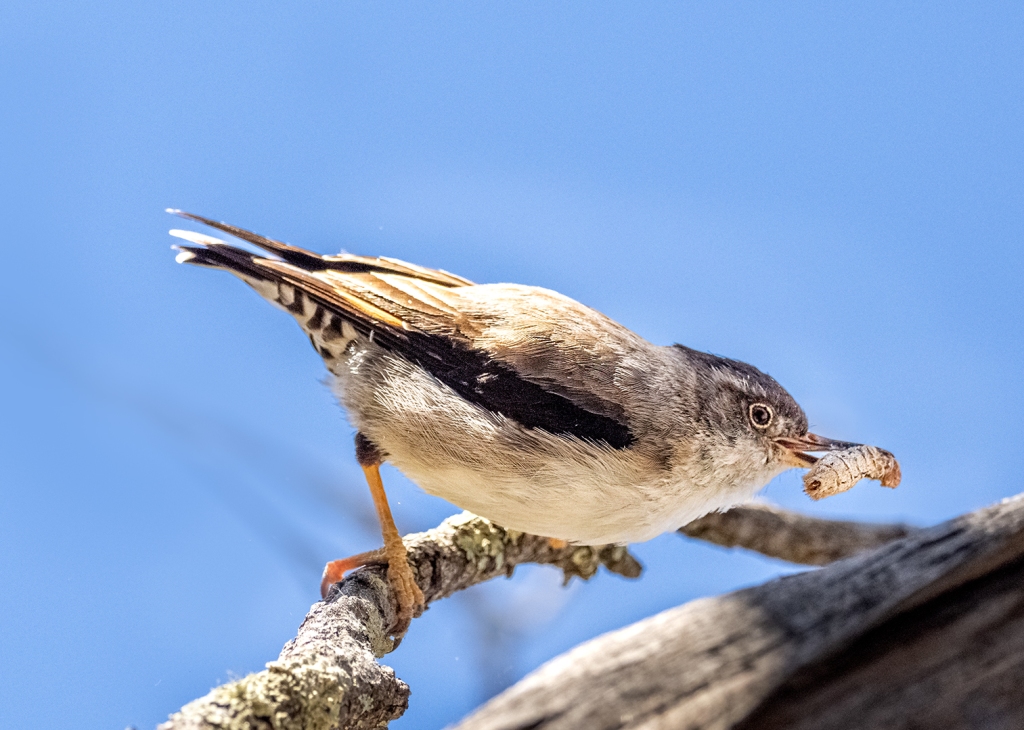
Inglewood was established after gold was found at Thompsons Gully in 1858, less than 800m from our Mallee St birding spot. It grew to around 50,000 people by time the 70kg Welcome Stranger nugget was discovered not far away in 1869. The box-ironbark forest of the Inglewood NCR contains many ruins, remnants and relics relating to the area’s rich gold mining history. Discovery of the 27kg Hand of Faith nugget in 1980 a few kms out of town suggest the area’s prospecting history is far from over.
What a great start to the weekend. Our excited group headed on to Wedderburn for the evening, some camping at Mt Korong NCR, others staying in the caravan park or in the local motel or holiday houses.
Sat 18 Nov
An Australian Owlet-nightjar was our second species for the Saturday morning – an auspicious start to our second day and a lifer for many. Peering out from its hollow in the Mount Egbert Block of the Wychitella NCR, 20km NE of Wedderburn, it seemed undisturbed by 17 people taking pictures. Later, another Owlet-nightjar was spotted in a separate hollow of a tree 20m away.

The slopes of Mt Egbert up to the Granites comprise open dry woodlands with a mix of box-ironbark forest, acacia shrubland and larger granite outcrops. We started at Granite Creek Rd, just off Old Boort Rd, exploring the lightly wooded and more open areas up the slope towards the telecommunication tower.
In the trees, Horsfield’s Bronze-cuckoos and Peaceful Doves called. Brown Treecreepers, Galahs and both Corellas were common. Further up the slopes, Southern Whiteface showed their faces as White-browed babblers babbled to themselves as we passed. A Wedge-tailed Eagle and Little Eagle glided overhead.
After a while, we regrouped at the cars and drove further up Granite Creek Rd to the western edge of the hill next to two dry creek beds.
Heading off into the light scrub, we were observed from above by White-browed, Masked and Dusky Woodswallows and Rainbow Bee-eaters and serenaded by Rufous Songlarks. Other highlights here were Diamond Firetails, Red-capped and Hooded Robins and Painted Honeyeaters.
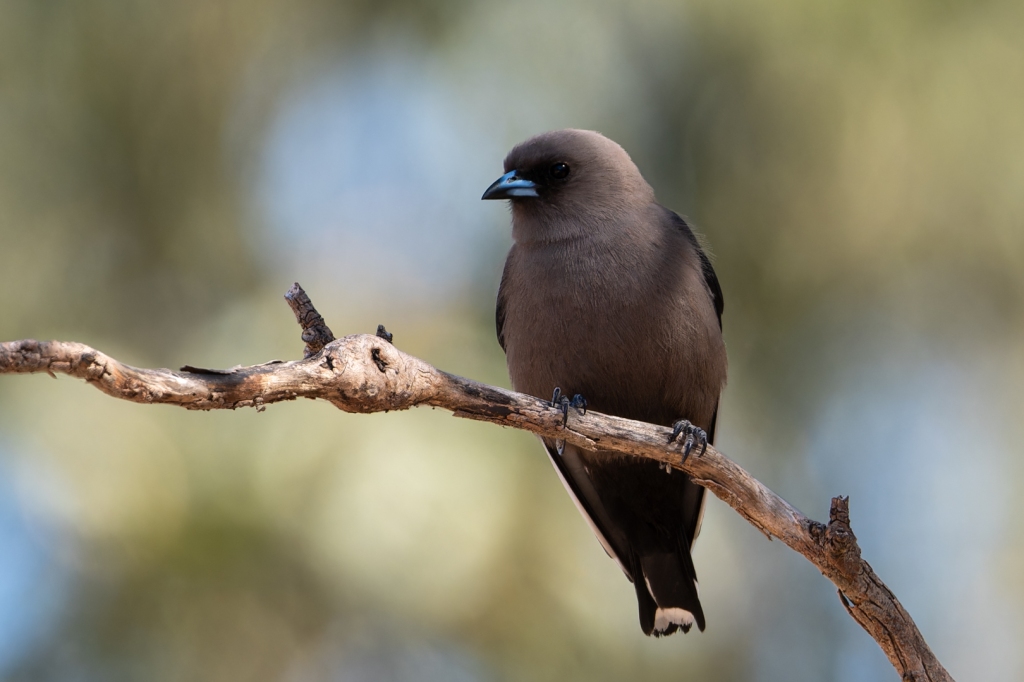
With all-terrain vehicles, some managed to navigate the heavily water-damaged road up to the Granites for the stunning 360° views, but only Welcome Swallows and Singing Honeyeaters were there to greet them.

By now the heat was building towards 30°C under blue skies, so we adjourned 30km north to Boort for lunch on the shores of Little Lake Boort. And more caffeine medication.
A gentle circuit around the Little Lake provided a rewarding afternoon’s birding with over 60 species seen. The water provided a striking contrast to the dry bush of the morning and a whole new bunch of birds, and some relief from the 30°C+ temperature.
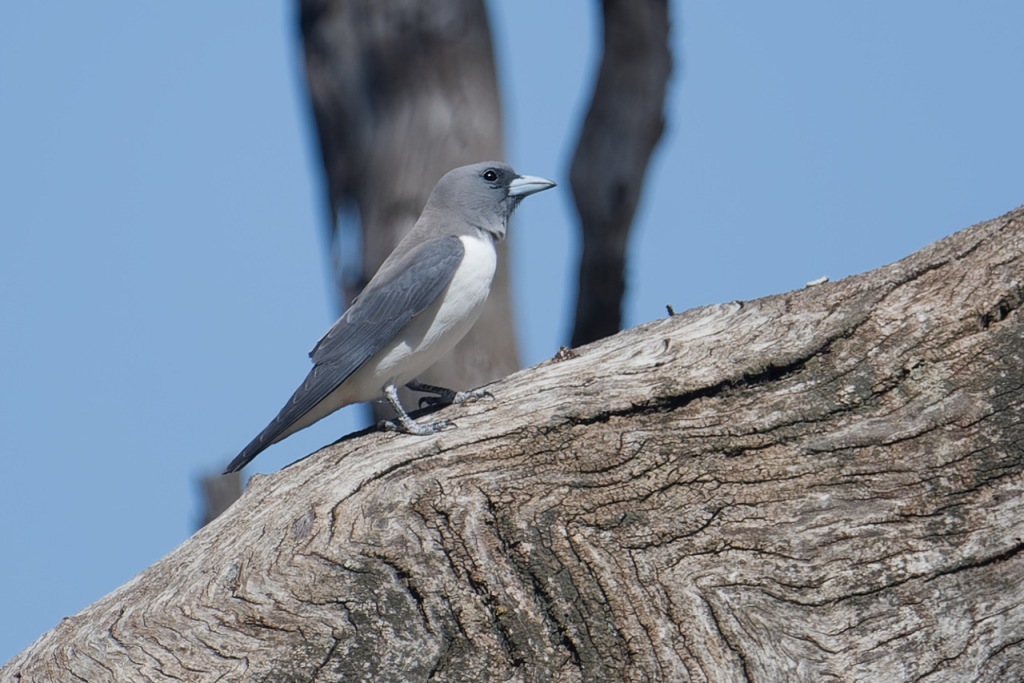
A flock of 50 Australian Pelicans circled overhead before opting to land on the larger Lake Boort next door. Eurasian Coots, Dusky Moorhens, Australasian Swamphens and Hoary-headed Grebes dotted the lake, together with the odd Black Swan and some Australasian Darters. Silver Gulls abounded.

The lake fringes presented Little Black, Little Pied, Great and Pied Cormorants, as well as quite a few Australian Reed Warblers. Special sightings included a Purple-backed Fairywren, an Australian Spotted Crake and a Pied Butcherbird. And some Grey-crowned Babblers raised some white eyebrows.
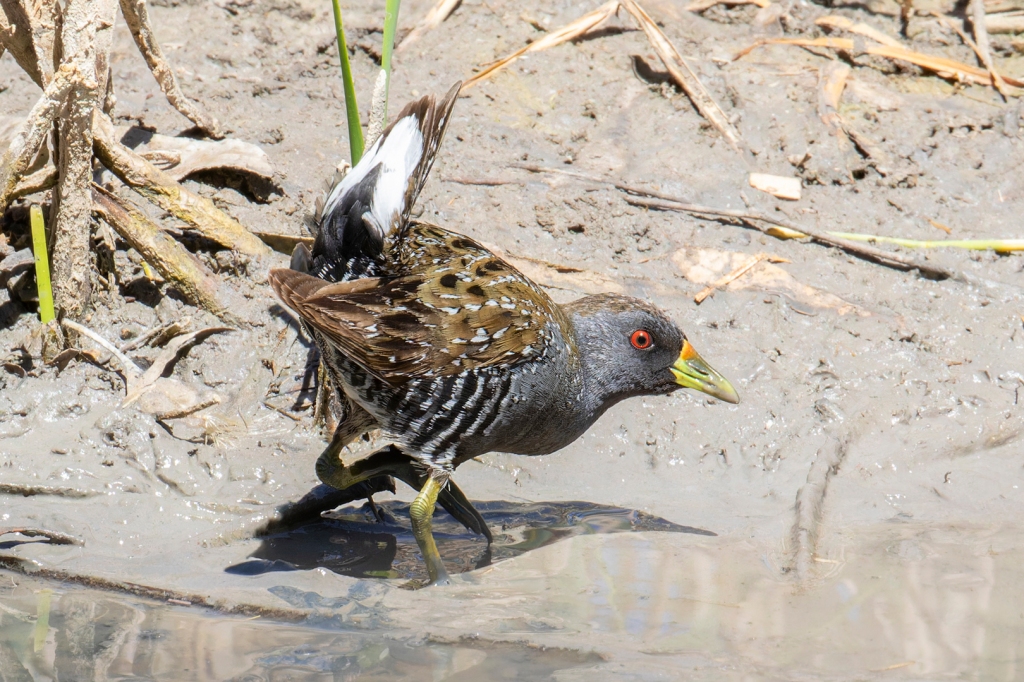
Back at the carpark, we were entertained by several Musk Lorikeets with their heads embedded in Grevillea robusta flowers, their faces covered in orange pollen. And by two Little Lorikeets that did a low-level fly-pass.

Boort has been a significant agricultural region since the mid-1800s, with good water supplies from the lakes and the nearby Loddon River. Today it lived up to its moniker as the Northern Oasis. But exhausted by trekking for 6 hours in the heat and needing to recharge our batteries, we retreated back to Wedderburn to put our feet up. We regrouped at the Wedderburn Hotel for excellent food and drink and tall stories from the day.
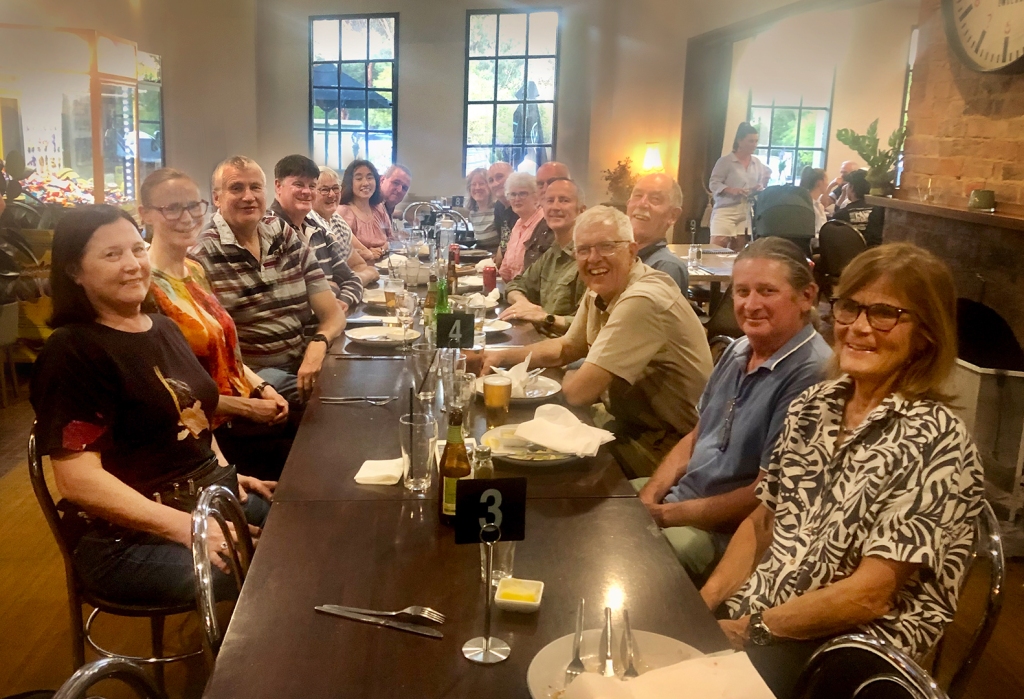
With its unique surrounding ecosystems where four different bio-regions intersect, the township of Wedderburn is an ideal birding base and it knows it. Five outstanding Birds Eye View Murals by artists Jimmy Dvate, Andrew Bourke and Bryan Itch adorn local buildings – the Uniting Church, Randall’s Foodworks, Burge’s Newsagency and General Store, the Wedderburn Hotel and the Soldiers Memorial Park and Travellers Rest. The 2021 murals were supported in part by the Victorian Government’s Creative Activation Fund. There’s nothing quite like an 8m-high Blue-faced Honeyeater or 3m Diamond Firetail to inspire you for a good day out.

Sun 19 Nov
Early risers were rewarded with a Red-backed Kingfisher, Eastern Shriketits and Hooded Robins at Mt Korong NCR. But when the rest of the group assembled 15km SE of Wedderburn at the east end of the Mt Korong Firebreak Track at 9.00am, there were many other excellent birds still to be found.

Painted and Spiny-cheeked Honeyeaters abounded, along with White-winged Trillers, Southern Whiteface, White-browed Babblers and an attention-seeking Mistletoebird. Two Wedge-tailed Eagles drifted effortlessly down from the ridge above, enjoying the thermals from the warm morning sun.
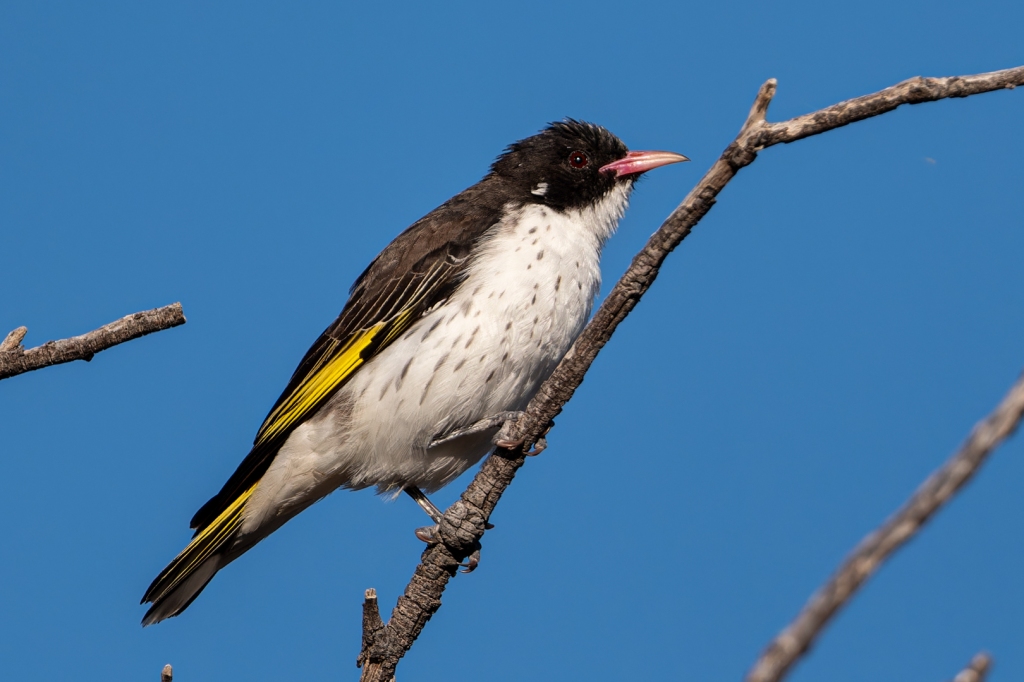
Fan-tailed and Pallid Cuckoos and a Horsfield’s Bronze-cuckoo were recorded and many Rufous Songlarks taunted us as we travelled round the firebreak circuit. Plenty of other honeyeaters put in appearances – White-eared, Yellow-faced, White-plumed, Singing and New Holland. A Restless Flycatcher and White-winged Choughs were also in the mix of the 55 species seen.
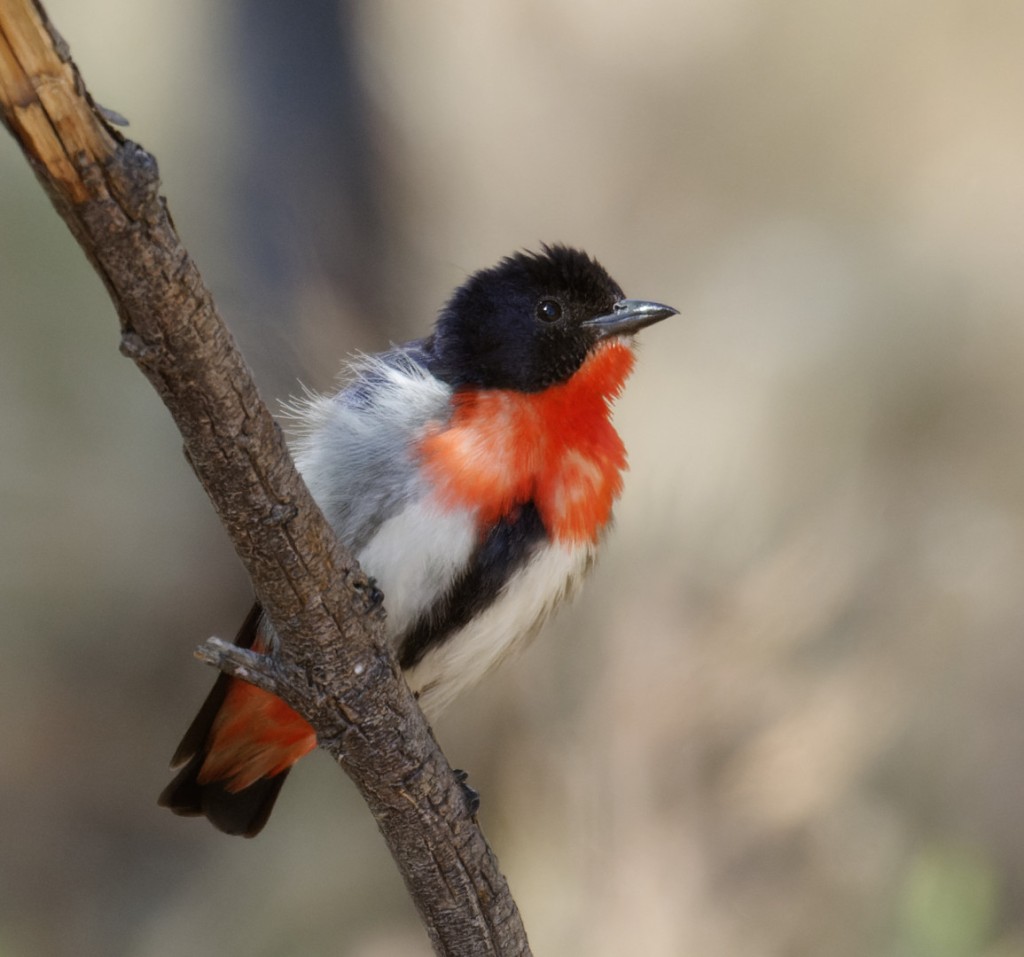
By late morning, the temperatures again were approaching 30°C and it was time to seek shade and consume calories – and self-medicate with caffeine. The Melville Caves Picnic Area in the Kooyoora State Park was just the ticket and its covered picnic shelter accommodated the whole group comfortably.
The caves are named after the notorious bushranger Captain Melville who had been sentenced to transportation from Scotland in 1836 aged 15 for housebreaking. After time in Port Arthur, he arrived in Victoria in 1851 and became a bushranger in the Mt Macedon area. He later used the caves near Kingower as a hiding place and lookout in the mid-1800s as he preyed on gold escorts until his death in 1857.
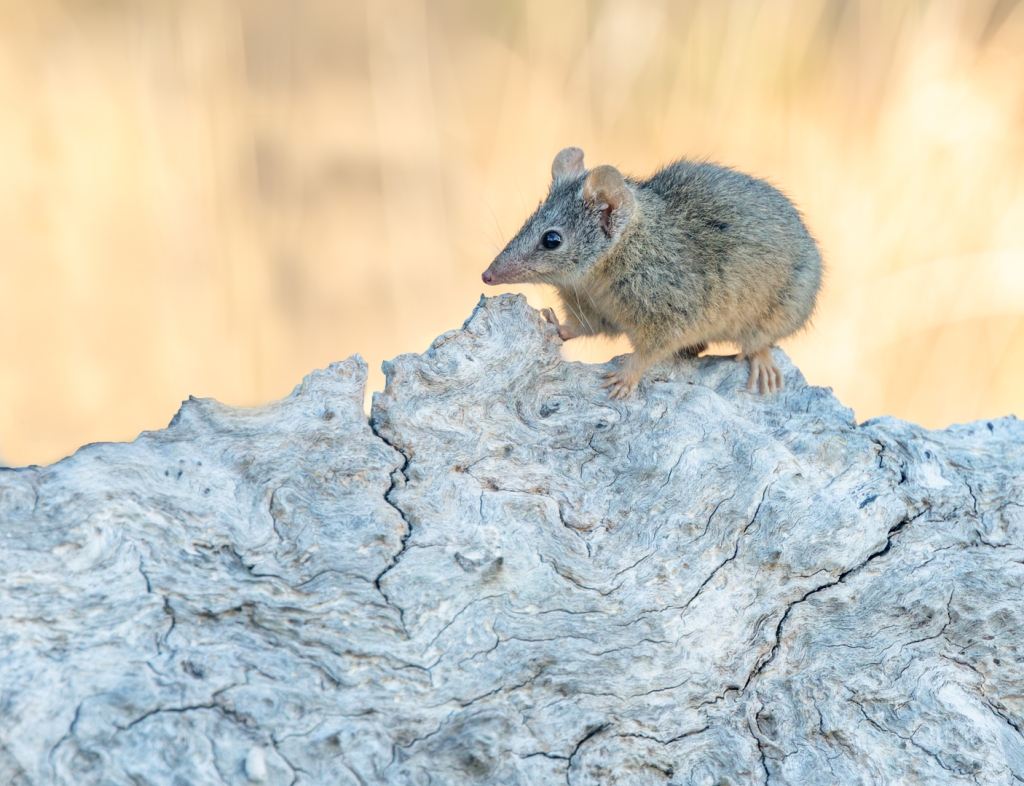
The afternoon heat was a little challenging – for the birds as well as us. A gentle circuit south from the picnic area along the Long Rock Walking Circuit took in rather dry treed bush. Notable catches were Red-browed Finches, Silvereyes, a Scarlet Robin and a Grey Fantail – surprisingly the first for the weekend.
Back around the picnic area we found Spiny-cheeked Honeyeaters, Rainbow Bee-eaters, Rufous Whistlers, a Sacred Kingfisher and Horsfield’s and Shining Bronze-cuckoos, as well as an Eastern Spinebill and a Grey Shrikethrush.
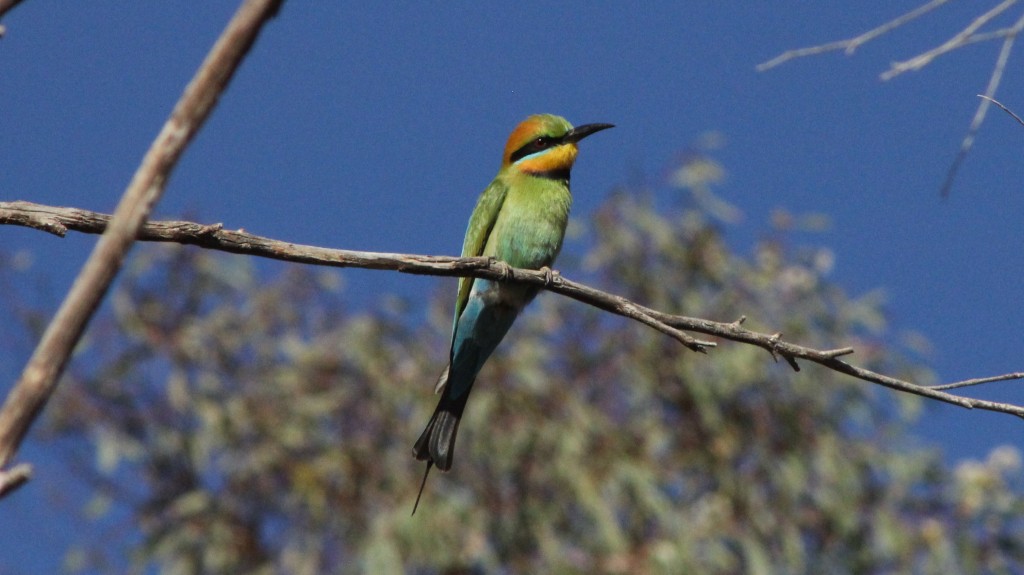
Time to cool off, sit back and relax, so we headed back into Wedderburn to put our feet up with a cuppa. Once refreshed, we regrouped in Jacka Park in the centre of town for a good chat and a BBQ – although everyone brought preprepared food or fish ‘n’ chips from the take-away across the road, so the BBQ was surplus to requirements. A lovely evening.
Mon 20 Nov
By the Monday, our group remained strong at 10, a great number for the 4th day and testament to the great locations, weather and birding. By now we had learned to start earlier to benefit from cooler conditions, so we headed off at 8.00am to Railway Reservoir in the Wychitella NCR, about 15km NE of Wedderburn.

After a dry flood-channel crossing that tested the nerve of non-4WD drivers, the reservoir proved to be a really fabulous location. With plenty of water still in the reservoir, the surrounding trees and bush were alive with birds.
A spectrum of honeyeaters used a common tangle of roots to perch together for a drink from the cool waters – Brown-headed, Yellow-tufted, Yellow-plumed, White-eared, White-fronted, White-plumed.
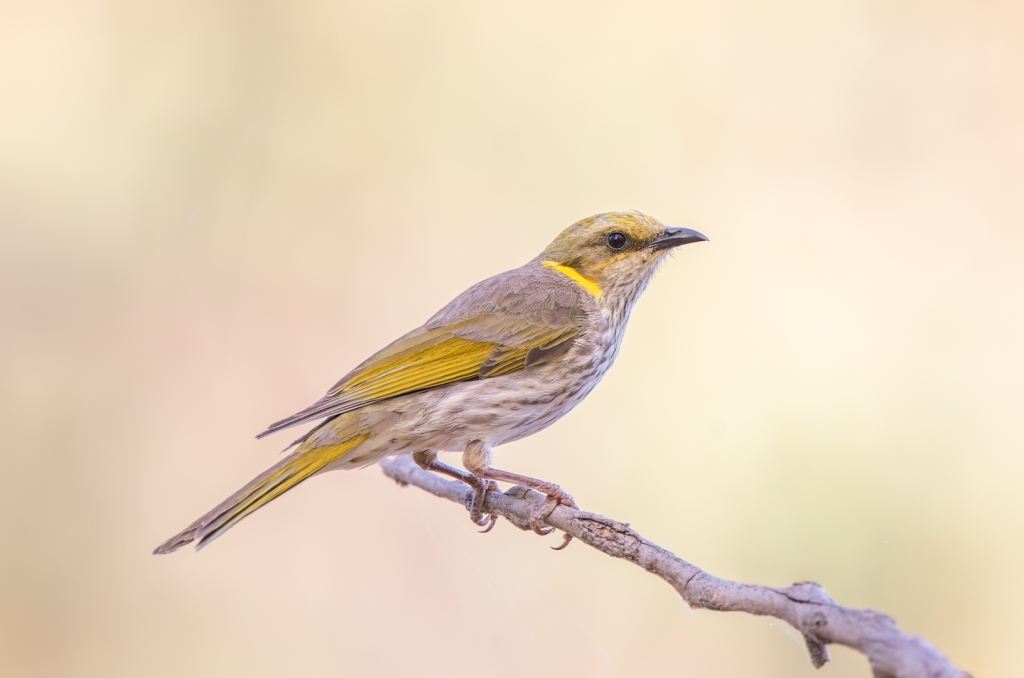
The trees echoed to calls from Fan-tailed Cuckoos, Horsfield’s and Shining Bronze-cuckoos, Sacred Kingfishers, Peaceful Doves, Black-faced Cuckooshrikes and Laughing Kookaburras.
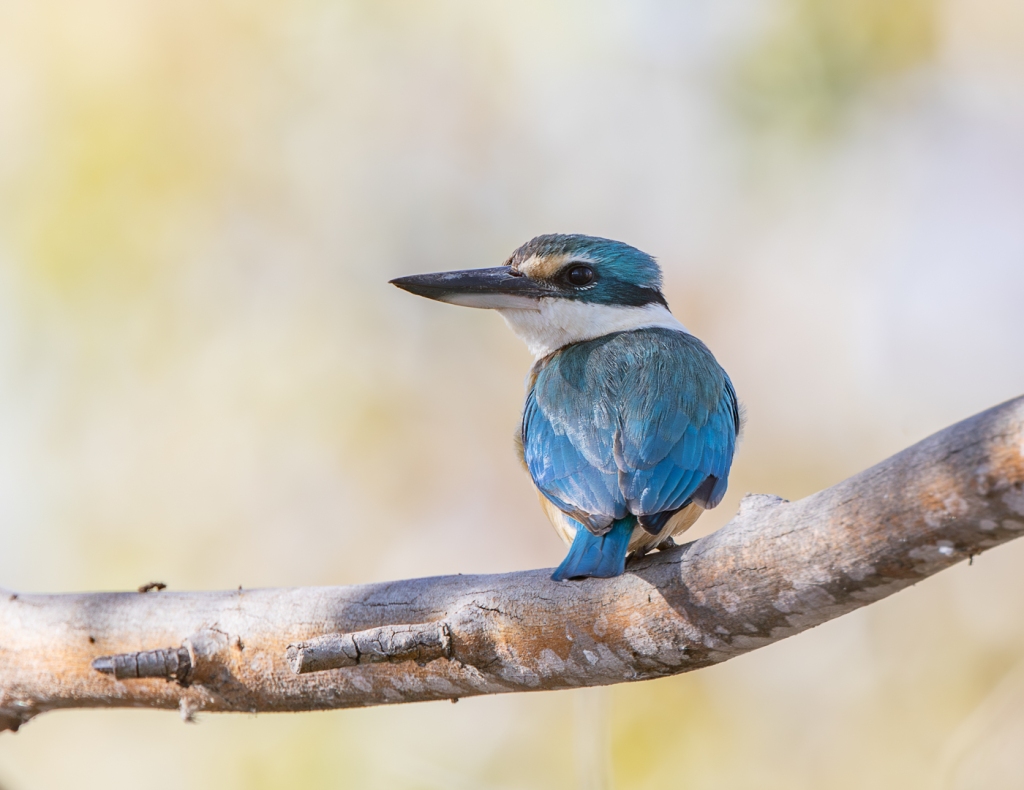
Hoary-headed and Australasian Grebes were diving in the water, while a large flock of Little Pied Cormorants moved around the reservoir to find the perfect spot to float in peace.
Overhead, White-browed Woodswallows, Fairy Martins and Welcome Swallows circled constantly. A single Little Eagle perched stoically on a tree supervising everything.
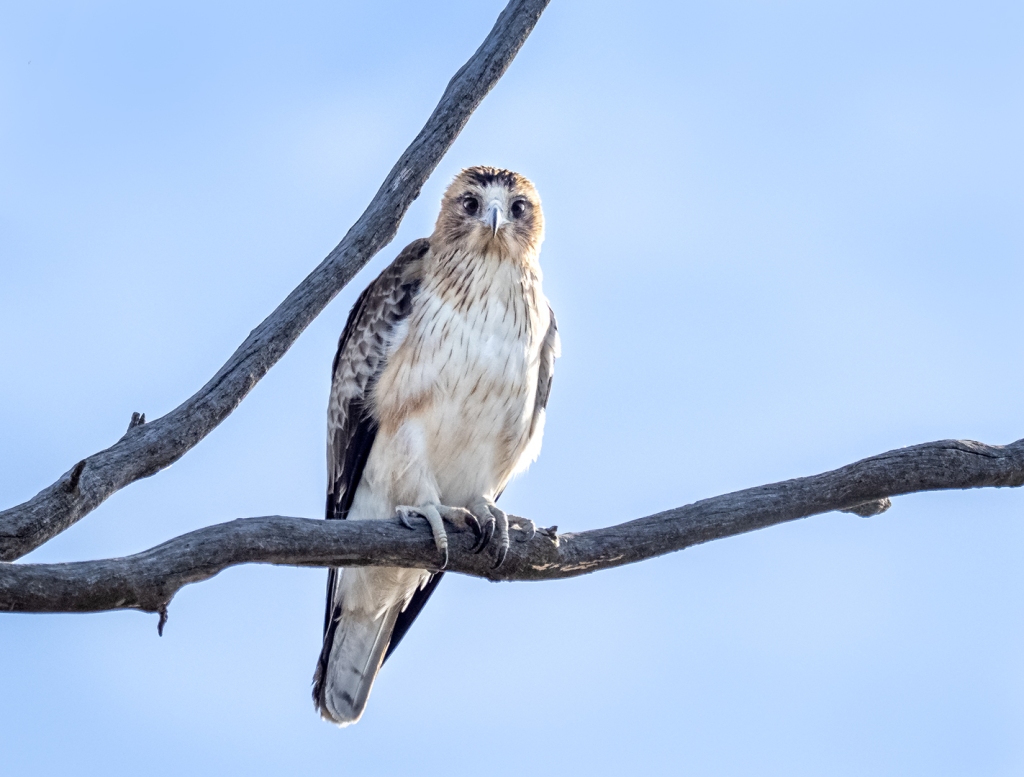
Mid-morning, we continued in convoy down Railway Reservoir Rd, seeing some dramatic erosion from water-courses in the woodland. We regrouped at Skinners Flat Reservoir 6km to the west for our last stop of the weekend.

A bunch of Black Native-hens caught our attention straight away, far away on the opposite shore. Then a juvenile Nankeen Night Heron in nearby treetops became a target for some unhappy Noisy Miners and demanded we focus a little closer. Further along the lake, a Yellow-billed Spoonbill perched in a tree, while Eurasian Coots, Masked Lapwings and Black-fronted Dotterels patrolled the water’s edge.
And so our weekend drew to a close and people drifted back towards the city to resume normal, mundane lives.

But what a weekend. Not a drop of rain. Clear blue skies. Warm conditions. Almost 130 species recorded in four days. Many people with lifers under their belt. Excellent company and shared experiences. Terrific organisation.
Our sincere thanks to Peter Bennet and John Van Doorn for organising and coordinating the weekend, previewing all the locations, creating the program of suggested sites and keeping the show on the road over the last 13 months to bring this weekend to magnificent fruition.
